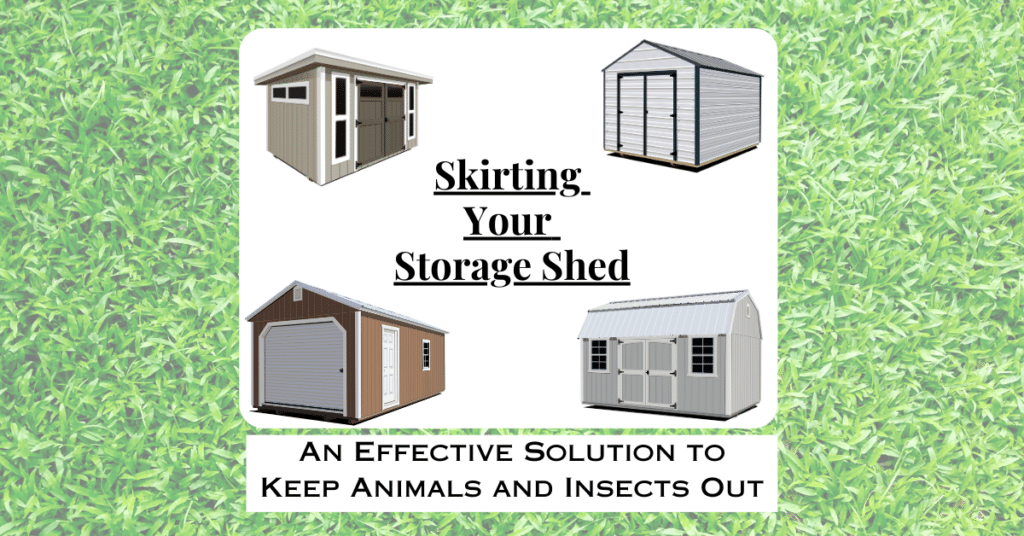When you invest in a storage shed, it’s essential to take measures to protect it from unwanted guests, including animals and insects. One effective solution is to skirt the sides of your shed, creating a barrier that prevents access to the area underneath. In this blog, we’ll explore the best practices for skirting your storage shed, providing a practical and affordable solution to keep critters at bay.
Choose the Right Skirting Material For Your Shed:
Selecting the appropriate skirting material is crucial to ensure its durability, effectiveness, and aesthetics. Several options are available, each with its advantages:
- Lattice: Lattice panels offer a visually appealing option that allows for good airflow while providing a barrier. They are relatively easy to install and can be customized to match your shed’s design.
- Metal Mesh: Metal mesh, such as hardware cloth, is an excellent choice for preventing rodents and insects from entering. It provides a solid barrier against burrowing and chewing.
- Vinyl Skirting: Vinyl skirting is a low-maintenance option that is resistant to rot, moisture, and pests. It comes in various styles, including solid panels or slats, allowing you to choose the design that suits your preferences.
Measure and Plan the Installation On Your Shed:
Before purchasing the skirting material, accurately measure the perimeter of your shed to determine the required amount. Consider the height you want to achieve for effective animal and insect deterrence. Plan for access points, such as doors or vents, by incorporating removable sections or hinged panels for easy maintenance and repairs.
Prepare the Area For Shed Skirting:
To ensure a smooth installation process, prepare the area around your storage shed. Clear away any debris, rocks, or vegetation that could hinder the installation process or create a hiding place for animals. Level the ground if necessary to provide a solid base for the skirting.
Install the Skirting:
Follow these general steps for installing the skirting:
- Start by attaching a ledger board to the bottom of your shed, ensuring it is level and securely fastened. This will provide support for the skirting panels.
- Cut the skirting material to the appropriate height and length, allowing for a snug fit along the sides of the shed.
- Install the skirting panels one by one, securing them to the ledger board and the ground using appropriate fasteners. Ensure that the skirting is firmly attached and there are no gaps where animals or insects can enter.
- If using lattice or slatted panels, consider adding a bottom frame to prevent animals from squeezing through the gaps. Attach the frame securely to the panels and the ground.
Maintain and Inspect Skirting Regularly:
Once the skirting is installed, it’s important to conduct regular inspections and maintenance. Check for any signs of damage, gaps, or areas where animals may have attempted to enter. Repair any issues promptly to maintain the effectiveness of the skirting. Additionally, keep the surrounding area clean and clear of debris to discourage animals from seeking shelter near the shed.
Skirting the sides of your storage shed is an effective method to prevent animals and insects from accessing the area underneath. By choosing the right skirting material, accurately measuring and planning the installation, and conducting regular inspections, you can create a durable and reliable barrier. Skirting not only keeps unwanted guests out but also enhances the aesthetics of your storage shed. Implement these steps to safeguard your shed and enjoy critter-free storage space for years to come.

